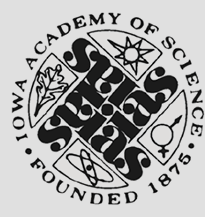Home > Iowa Academy of Science > Journals & Newsletters > Iowa Science Teachers Journal > Volume 15 > Number 3 (1978)
Document Type
Article
Abstract
The three dominant groups of algae found in Iowa are Chlorophyta (green algae), Cyanophyta (blue-green algae), and Chrysophyta (golden-brown algae). The golden-brown algae is composed of a variety of species called diatoms. This is the first in a series of articles on Iowa diatoms. Unlike most other plant species which have cell walls of cellulose, diatoms have siliceous cell walls constructed of two overlapping valves which fit together like the lids of Petri dishes. These walls are ornamented with fine ridges, lines and pores that are characteristic for each species. Although the contents of the cells decompose readily the cell walls are very resistant to degradation. The cell walls form the basis for most biological studies involving the identification and occurrence of diatoms. Diatoms store their excess food reserves as oils and it is believed that prehistoric diatoms may have contributed significantly to the existing petroleum reserves of the world.
Publication Date
December 1978
Journal Title
Iowa Science Teachers Journal
Volume
15
Issue
3
First Page
15
Last Page
17
Copyright
© Copyright 1978 by the Iowa Academy of Science
Language
en
File Format
application/pdf
Recommended Citation
Hungerford, James
(1978)
"Iowa's Diatoms: Part I (Collection),"
Iowa Science Teachers Journal: Vol. 15:
No.
3, Article 8.
Available at:
https://scholarworks.uni.edu/istj/vol15/iss3/8

